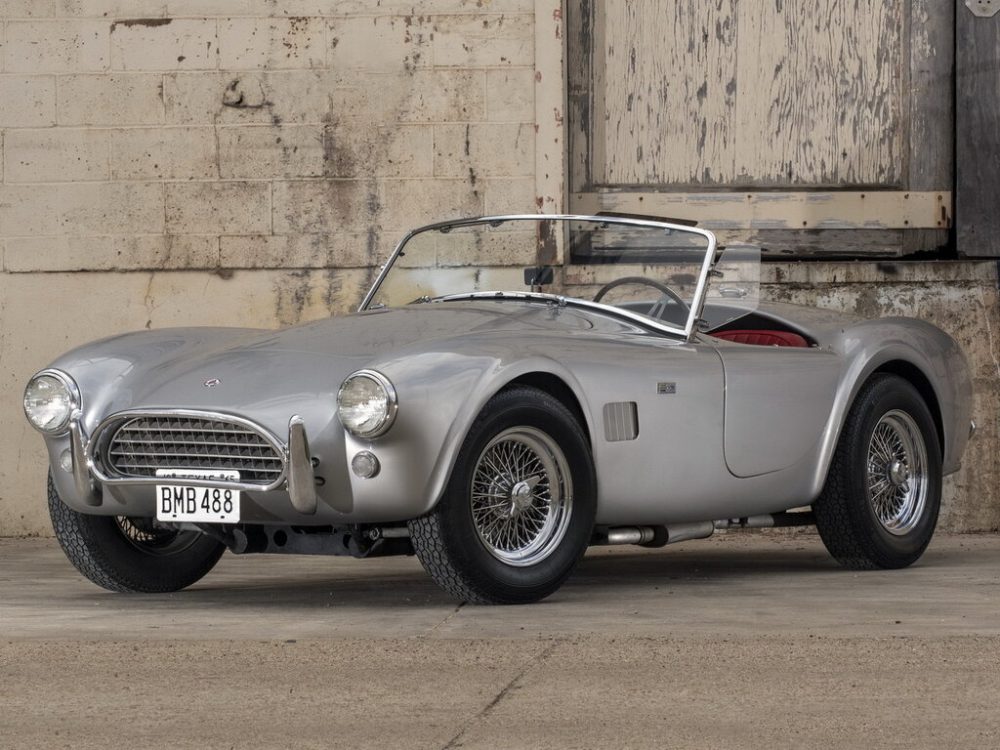Raw power wrapped in aluminum. The AC Cobra Mk II emerged in 1963 as a testament to what happens when British craftsmanship collides with American muscle. This wasn’t just another sports car – it was a revolution on wheels that changed motorsport forever.
The story of the Mk II reads like a masterclass in automotive alchemy. Carroll Shelby’s vision of combining AC’s lightweight chassis with Ford’s V8 created something extraordinary: a machine that could outrun Ferrari while costing half as much.
Birth of a Legend
The Mk II’s story began in Thames Ditton, England, where AC Cars had been crafting elegant sports cars for decades. The marriage of their refined chassis with Ford’s robust 289 cubic inch V8 engine transformed a genteel British roadster into a fire-breathing monster that demanded respect on both road and track.
This Anglo-American collaboration pushed engineering boundaries in every direction. The chassis required significant reinforcement to handle the newfound power, while the body underwent subtle but crucial aerodynamic modifications.
“I remember the first time I saw the Mk II at Goodwood. The sound alone made every other car seem ordinary. When it moved, it was like watching poetry written in tire smoke.” – James Harrison, vintage racing enthusiast
The development team faced countless challenges, from cooling issues to weight distribution problems. Yet each obstacle yielded innovations that would influence sports car design for decades to come.
Engineering Excellence
At the heart of the Cobra Mk II beat a specially modified Ford V8, producing around 260 horsepower. But raw power tells only part of the story. The real genius lay in how this mechanical brute was tamed and refined.
The engineering team’s attention to detail manifested in several groundbreaking features:
- transverse-leaf spring suspension that provided exceptional handling balance;
- integrated rear brake design that reduced unsprung weight;
- reinforced chassis members that maintained structural rigidity;
- optimized weight distribution through strategic component placement;
- aerodynamic improvements that enhanced high-speed stability.
These engineering choices resulted in a car that weighed just over 2,000 pounds while delivering performance that embarrassed many established competitors.
Racing Heritage
The Cobra Mk II didn’t just participate in races – it rewrote the rulebook. From local club events to international competitions, it proved that sophisticated European engineering wasn’t the only path to victory.
“During the ’64 season, I witnessed a Cobra Mk II take on three Ferraris at once. The sound of that Ford V8 still rings in my ears. That day changed my perspective on American engines forever.” – Michael Reynolds, former race mechanic
Success on the track came through a combination of robust engineering and remarkable adaptability. Teams could tune the Mk II for various racing conditions, from short sprints to endurance events.
The competition history spans numerous victories across multiple continents, cementing its reputation as one of the most versatile racing platforms of its era.
Legacy and Influence
Few cars have left such an indelible mark on automotive culture. The Mk II proved that a small British manufacturer could create a world-beating sports car by thinking outside the conventional European framework.
This approach to performance car building – combining lightweight construction with abundant power – became a template for countless vehicles that followed. From track-day specials to modern supercars, the Mk II’s DNA lives on.
The raw numbers tell only part of the story. Each surviving Mk II carries with it tales of victory, innovation, and the golden age of motorsport.
The Final Verdict
After decades, the AC Cobra Mk II remains a benchmark for sports car excellence. Its influence extends far beyond its brief production run, inspiring generations of engineers and enthusiasts.
The passion it ignites hasn’t dimmed with time. If anything, the legend has grown stronger as modern cars become increasingly complex and digitized.
Pros and Cons
| Advantages | Disadvantages |
|---|---|
| Exceptional power-to-weight ratio delivering blistering performance | Limited weather protection due to basic soft top design |
| Highly responsive handling characteristics | Challenging to drive in wet conditions |
| Mechanical simplicity making maintenance straightforward | Minimal storage space for luggage |
| Strong aftermarket support and parts availability | Firm ride quality on rough roads |
| Outstanding appreciation potential as a collector’s item | High fuel consumption under spirited driving |
| Iconic design that turns heads everywhere | Limited production numbers make finding original parts difficult |
| Excellent track day capability | Requires skilled handling at the limit |
The AC Cobra Mk II represents more than just performance figures or racing victories. It embodies the spirit of innovation and the golden age of motorsport, when mechanical simplicity and raw talent determined success.

